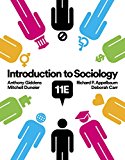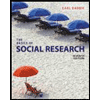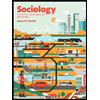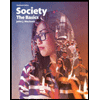DEVELOPMENT OF ONE’S PERSPECTIVE OF SELF (EPAS 2.1.1.2, 2.1.1.3; EPAS 2.1.2.1, 2.1.2.3; EPAS 2.1.3.1; EPAS 2.1.6.1; EPAS 2.1.7.2; EPAS 2.1.8.2) This paper (aka Development of Self or DOS) is designed to help students begin to identify their own values, develop critical thinking skills in analyzing social and personal forces, demonstrates knowledge of the psychological forces that impact the individual, and identify their own assumptions of how people change. You are to describe your cultural background, values and beliefs associated with your group identities, and discuss how these attributes and dimensions of who you are influence your attitudes toward and interactions with others who are “different,” as well as their attitudes toward and interactions with you.1 In doing so, this assignment is an in-depth examination of the various micro-system issues related to human behavior and their impact on your personal development. This assignment requires you to write a critical self-analysis paper that consists of several different submissions. The final submission will be 6-8 typed, double-spaced, pages. You will address the following tasks and questions in your paper, while integrating appropriate references corresponding to course readings. TOTAL: 200 points STEP 1: Pick no more than two (2) social variables/dimensions that are important constructs of your identity. The various social variables/dimensions are outlined after the description of the entire assignment (see below). STEP 2: Discuss why you selected the respective variables/dimensions and the reasons you believe the selected dimensions define who you are at this stage of your life. STEP 3: Identify your risk and protective factors, and critical social relationships that have impacted your ability to construct a sense of self. Questions to consider: How have risk and protective factors hindered and/or supported your sense of identity development? What are your important relationships? What makes these relationships important? Provide specific examples of how these relationships affect you both early in life and presently. Describe the developmental stages through which you have passed in constructing your sense of self and describe where you are now while integrating appropriate references STEP 4: Identify two paradigms (traditional or alternative worldviews) relating to the dimensions identified in Part 1 of the paper. Include an analysis of how these paradigms inform larger social systems and beliefs (local/global systems and beliefs; social institutions e.g., family, school, government, etc.; cultural practices, etc.). Finally, discuss how such paradigms have changed the way you function, your values, your interaction with others and your beliefs about the world while integrating course references. STEP 5: Identify one on-going social force and include an analysis of how it has changed the way you function, your values, your interaction with others and your beliefs about the world. Integration of course and external references should be used to support your points. NOTE: A “social force” is defined as: “Any effective urge or impulse that leads to social action. Specifically, a social force is a consensus on the part of a sufficient number of the members of society to bring about social action or social change of some sort. In the plural, the social forces are the typical basic drives, or motives, which lead to the fundamental types of association and group relationship.” Fairchild, 1970 STEP 6: Identifying your assumptions: Get in touch with and describe what assumptions you made because of these paradigms and social forces. These assumptions could be about you, others or the world, and are usually operating assumptions that you bring into the social work relationship. Describe these assumptions you have about who people are, what therapeutic conversation is, and how people change. STEP 7: Conclude this section by examining the connection between the dimensions you have selected, your risk/protective factors, paradigms/social forces and the implications for your continued personal and identity development as a social worker.
DEVELOPMENT OF ONE’S PERSPECTIVE OF SELF
(EPAS 2.1.1.2, 2.1.1.3; EPAS 2.1.2.1, 2.1.2.3; EPAS 2.1.3.1; EPAS 2.1.6.1; EPAS 2.1.7.2; EPAS 2.1.8.2)
This paper (aka Development of Self or DOS) is designed to help students begin to identify their own values, develop critical thinking skills in analyzing social and personal forces, demonstrates knowledge of the psychological forces that impact the individual, and identify their own assumptions of how people change. You are to describe your cultural background, values and beliefs associated with your group identities, and discuss how these attributes and dimensions of who you are influence your attitudes toward and interactions with others who are “different,” as well as their attitudes toward and interactions with you.1 In doing so, this assignment is an in-depth examination of the various micro-system issues related to human behavior and their impact on your personal development.
This assignment requires you to write a critical self-analysis paper that consists of several different submissions. The final submission will be 6-8 typed, double-spaced, pages. You will address the following tasks and questions in your paper, while integrating appropriate references corresponding to course readings. TOTAL: 200 points
STEP 1: Pick no more than two (2) social variables/dimensions that are important constructs of your identity. The various social variables/dimensions are outlined after the description of the entire assignment (see below).
STEP 2: Discuss why you selected the respective variables/dimensions and the reasons you believe the selected dimensions define who you are at this stage of your life.
STEP 3: Identify your risk and protective factors, and critical social relationships that have impacted your ability to construct a sense of self. Questions to consider: How have risk and protective factors hindered and/or supported your sense of identity development? What are your important relationships? What makes these relationships important? Provide specific examples of how these relationships affect you both early in life and presently. Describe the developmental stages through which you have passed in constructing your sense of self and describe where you are now while integrating appropriate references
STEP 4: Identify two paradigms (traditional or alternative worldviews) relating to the dimensions identified in Part 1 of the paper. Include an analysis of how these paradigms inform larger social systems and beliefs (local/global systems and beliefs; social institutions e.g., family, school, government, etc.; cultural practices, etc.). Finally, discuss how such paradigms have changed the way you function, your values, your interaction with others and your beliefs about the world while integrating course references.
STEP 5: Identify one on-going social force and include an analysis of how it has changed the way you function, your values, your interaction with others and your beliefs about the world. Integration of course and external references should be used to support your points.
NOTE: A “social force” is defined as: “Any effective urge or impulse that leads to social action. Specifically, a social force is a consensus on the part of a sufficient number of the members of society to bring about social action or social change of some sort. In the plural, the social forces are the typical basic drives, or motives, which lead to the fundamental types of association and group relationship.” Fairchild, 1970
STEP 6: Identifying your assumptions: Get in touch with and describe what assumptions you made because of these paradigms and social forces. These assumptions could be about you, others or the world, and are usually operating assumptions that you bring into the social work relationship. Describe these assumptions you have about who people are, what therapeutic conversation is, and how people change.
STEP 7: Conclude this section by examining the connection between the dimensions you have selected, your risk/protective factors, paradigms/social forces and the implications for your continued personal and identity development as a social worker.
Unlock instant AI solutions
Tap the button
to generate a solution








